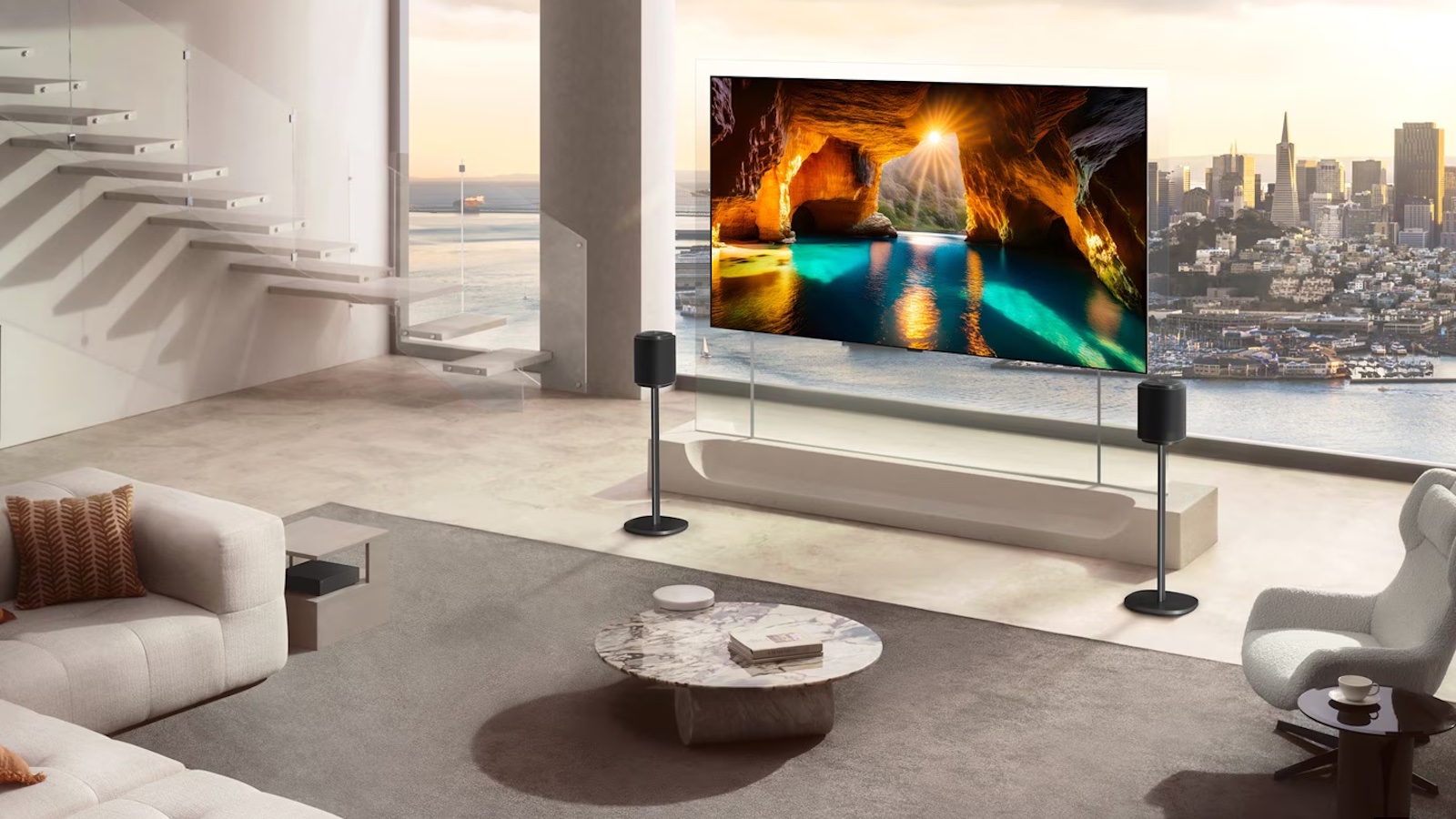What Hi-Fi? Verdict
The Canvas HiFi solution won’t appeal to those looking for a conventional soundbar system, but audiophiles who don’t mind dealing with some frustrations and a high price tag will find lots to like
Pros
- +
Clear and detailed sound
- +
Voices sound excellent
- +
Simplicity is appreciated
Cons
- -
Dynamics could be better
- -
Some rattle from the included grille
- -
Companion app needs some work
Why you can trust What Hi-Fi?
The Canvas HiFi is a home cinema anomaly. Is it a soundbar? Sort of. Is it a two-channel hi-fi system? Yes, but also no. It’s actually easier to affirm what the Canvas isn’t.
It’s not a Dolby Atmos soundbar, which might surprise you, considering it's designed to attach to your TV to produce cinematic sound.
It’s also not really a soundbar at all if we’re speaking in the traditional sense, as it’s designed for your TV to be mounted directly onto it.
While that might be a dealbreaker for some, especially the mainstream crowd, we find that this oddity in the world of home cinema audio is rather charming.
It also teaches us an important lesson: you don’t need a shedload of processing to create a cinematic sound experience.
Price
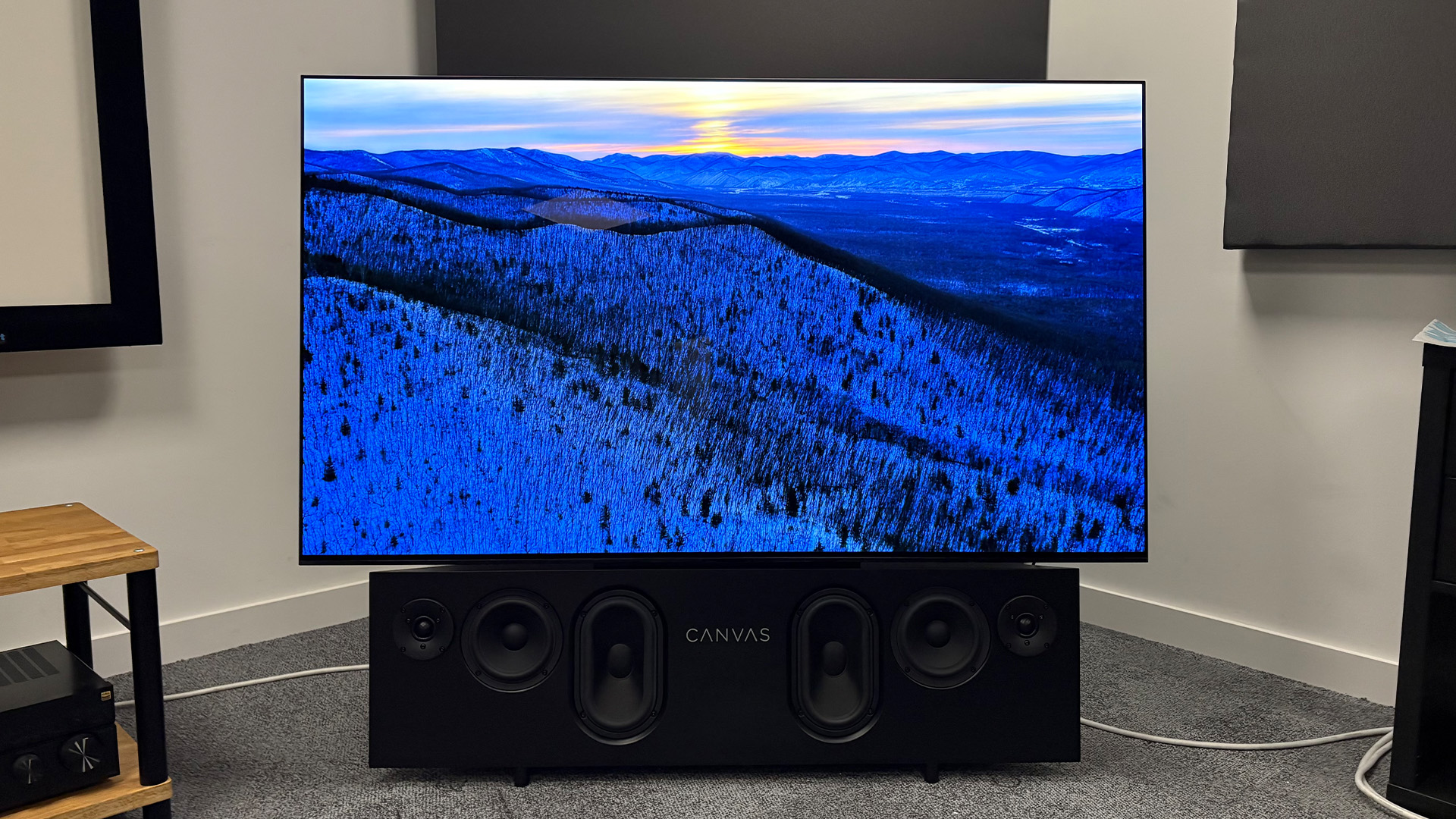
We have Canvas HiFi's Canvas 65 model, which is officially priced at a rather ambitious £2899 / $4999 / AU$5999. This is, unquestionably, a premium product, and the price tag should confirm that.
If you’re after a Canvas to fit your 55-inch TV, then you can expect to pay the same price, though owners of a 77-inch TV should expect to cough up £2999. Those lucky enough to have an 83-inch TV, meanwhile, will need to fork out a whopping £3299.
The latest hi-fi, home cinema and tech news, reviews, buying advice and deals, direct to your inbox.
It’s worth noting that the speaker system itself is the same size regardless; however, the grilles are different sizes to match your TV.
That means if you upgrade from a 55-inch TV to a 65- or 77-inch TV, you won't need to replace your whole system. Instead, just grab a new grille and everything will match up smoothly.
If you’re looking for competition in this price range, you’ll need to skip the usual soundbar suspects – such as Sonos, Sony and Samsung – and set your sights a little higher towards the likes of Bang & Olufsen’s £2300 Beosound Stage. We haven’t reviewed it, but its design-centric, premium standing aligns with the Canvas in some ways.
For a more conventional soundbar solution, the Sennheiser Ambeo Max is your best bet. That beast of a bar generally retails for £2199, however, it’s been on the market for a handful of years, so you’ll find it for closer to £1999.
Loose comparisons aside, it’s hard to directly relate the Canvas to anything in the soundbar category. In truth, it feels more closely related to a set of stereo speakers, though that involves pricing up an amplifier, plus having trailing cables and dealing with a lengthy set-up process.
Build
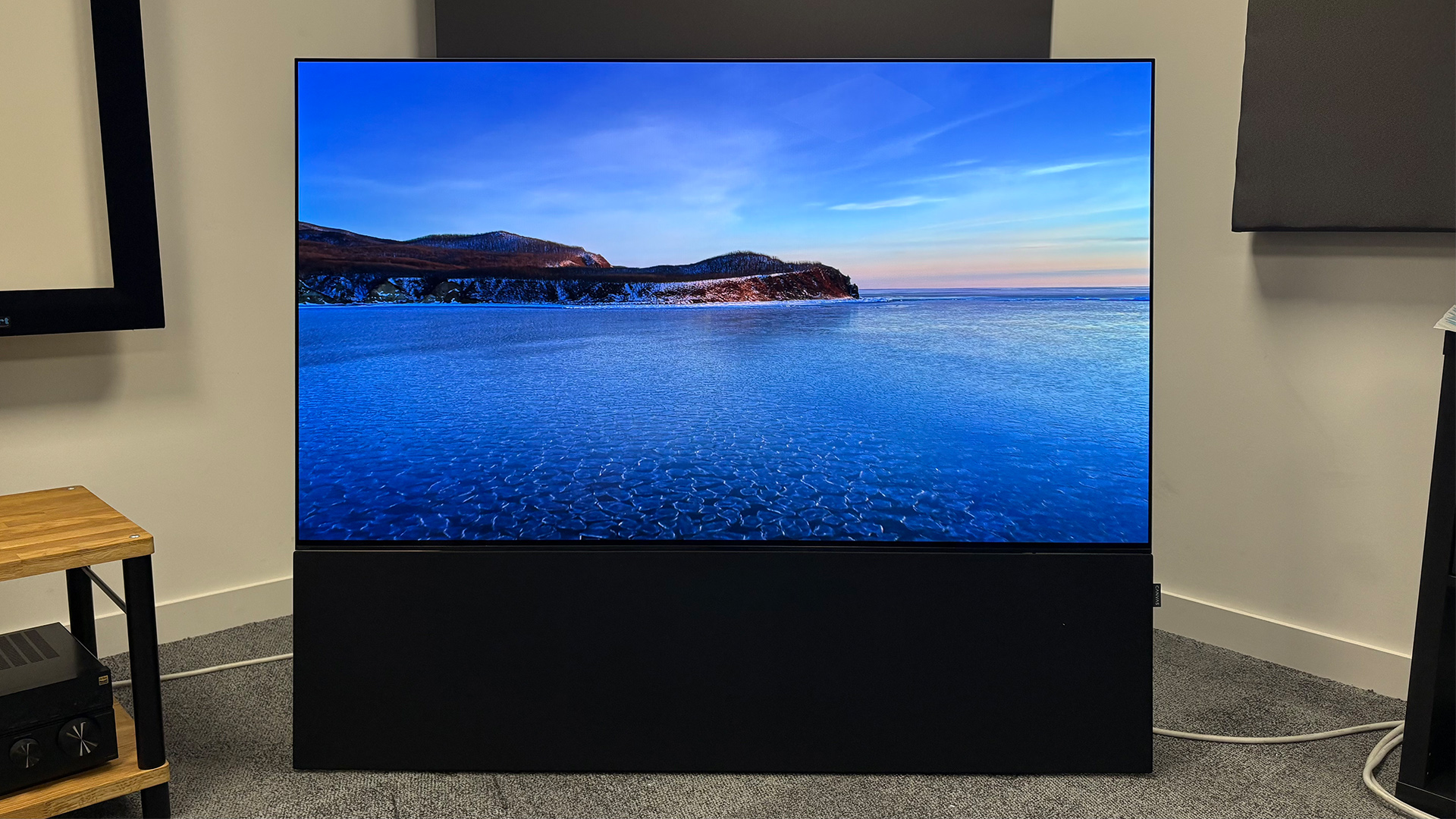
While the design of any soundbar is an important factor, arguably it’s a bigger deal when it comes to the Canvas Hifi, as it serves as a stylish companion to your TV while also upgrading the sound.
We have the Canvas set up in the floorstanding orientation, with a Sony Bravia 8 OLED TV affixed to the top, and can confirm that this duo looks rather suave. It creates a monolithic, freestanding look, with the included black fabric grille creating a seamless all-in-one aesthetic.

Connectivity HDMI ARC, optical tosslink, wi-fi, Bluetooth
Format support N/A
Streaming AirPlay 2, Google Cast, Tidal Connect, Spotify Connect, Roon
Voice control? No
Dimensions (hwd) 37 x 146 x 20cm (Floor standing, incl foot and front)
Weight Canvas: 26kg / Fabric front cover + bracket: 6.9kg
There are a couple of things to note, however. Set-up is quite involved, with multiple boxes and an Ikea-style guide that gets the job done, but could be more descriptive.
The guides to get your TV into position without leaving a gap are more like suggestions, but we managed to get the Canvas set up properly after a small amount of trial and error.
Note, you will certainly need at least two people to set the Canvas up, and we can’t comment on the wall-mounting process, though the parts required for that are included in the box.
Also included with the Canvas HiFi is a basic black fabric cover, which can be affixed easily thanks to magnets. Other fascias are available, and we gravitate towards a stunning light oak panel, which features a slatted wooden design.
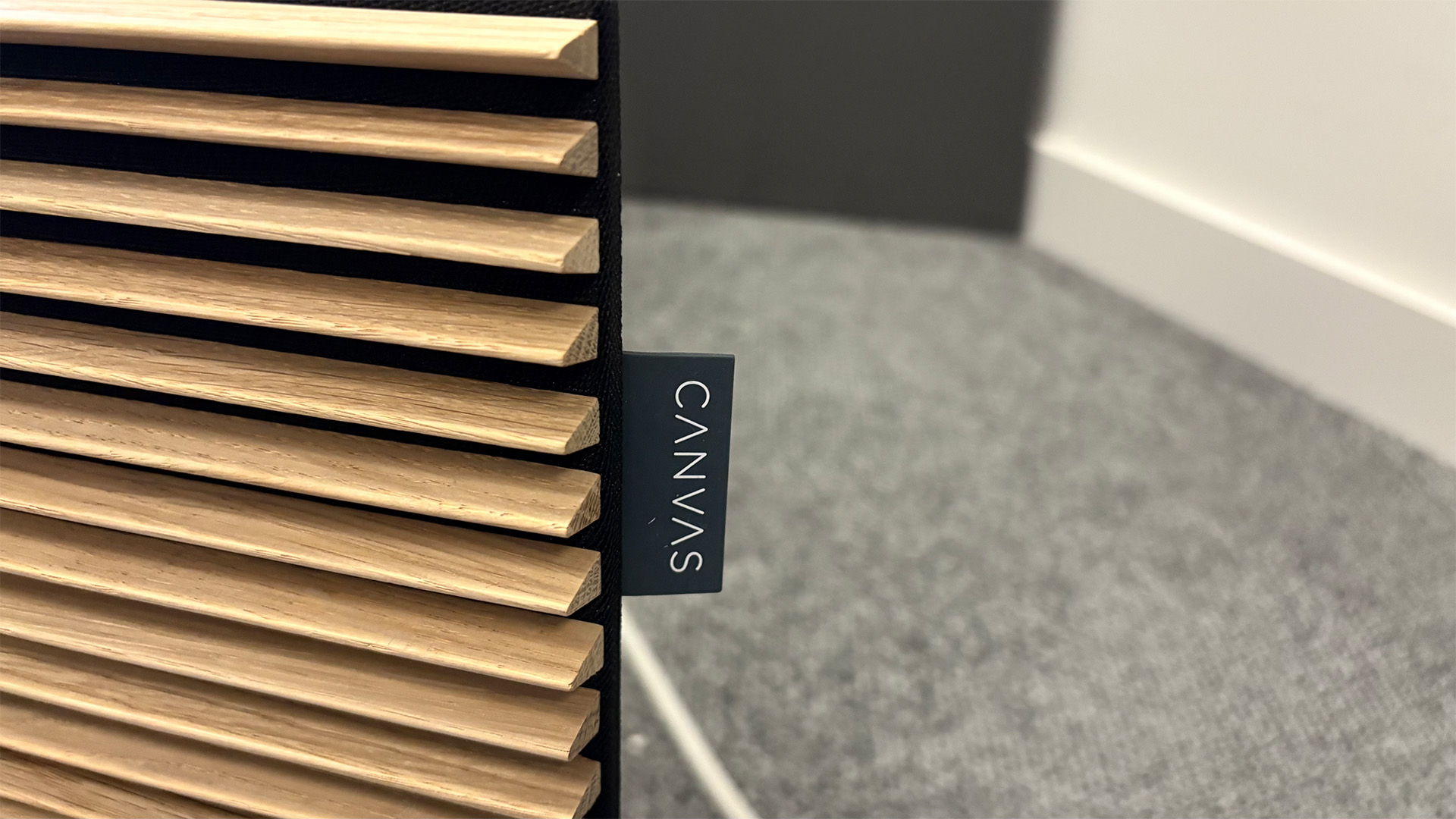
Be warned, though, that these additional covers are extraordinarily pricey, with that aforementioned wooden option costing a cool £1199. Fabric grilles, on the other hand, will run you £499, though these prices increase in relation to the size of your TV.
There are a couple of other niggles we have with the Canvas’ design.
First and foremost, the cubbyhole for the power and HDMI sockets is a bit too small, meaning plugging the system in can be a bit awkward, especially if you have a rigid HDMI cable.
Furthermore, the free-standing set-up does mean that the TV leans backwards slightly, as the feet on the bottom of the system are designed to angle the sound upwards.
We get that this has been done for the sake of sound performance, but be wary of placing your Canvas HiFi and TV in a place with either lots of ambient light or right under an indoor light, as the angle can result in noticeable reflections on your screen.
Features
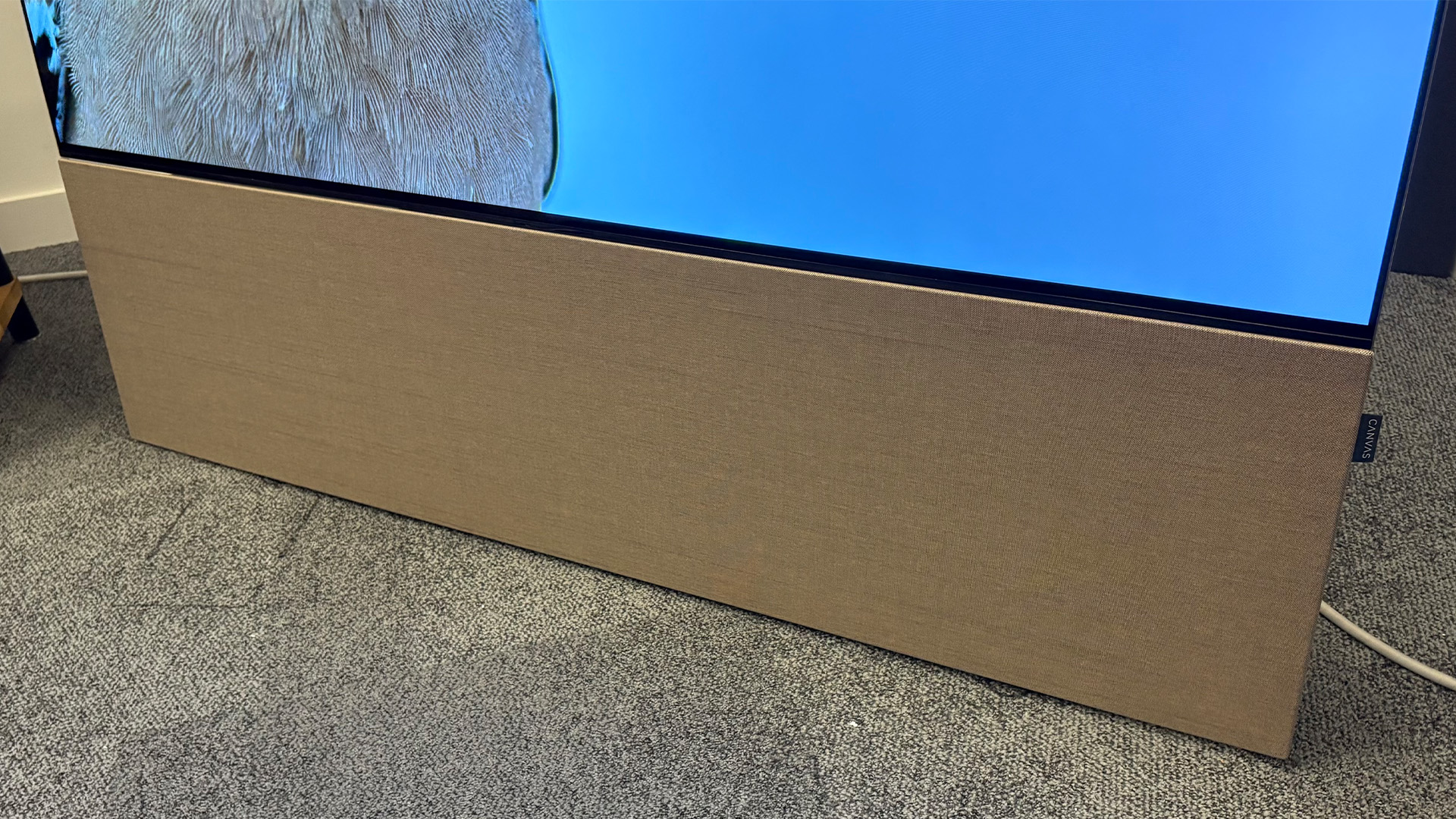
Here is where we’d usually list an exhaustive reel of features, including sound formats, calibration settings and the like. However, the Canvas HiFi is a surprising subversion of the premium soundbar market, as it doesn’t have quite so many gimmicks attached.
Let's start with the most important feature: the drivers. They’re hard to miss with the front cover detached, as they dwarf anything seen in the likes of the Sonos Arc Ultra or even the behemoth that is the Sennheiser Ambeo Max.
Within the MDF cabinet, which is supported by Canvas’s patented BridgeBrace technology for extra rigidity, you’ll find three pairs of drivers, all provided by high-end driver manufacturer SB Acoustics.
There is a pair of 16.5cm paper cone mid/bass drivers housed in die-cast aluminium chassis, dual 29mm silk dome tweeters with aluminium front plate waveguides, and, last but not least, a pair of low-loss, high precision passive radiators.
Powering these beefy speaker units are quad Class D amplifiers pumping out 250W of power each; that’s a total of 1000W of amplification. These are paired with Burr-Brown DACs, which support up to 24-Bit/192kHz digital signals.
The Canvas HiFi, therefore, rightfully takes the title of “most hi-fi soundbar to enter our testing room”; the clue is in the title, we suppose.
While the sheer magnitude of the drivers and amplification is undoubtedly rather impressive, the software is where the Canvas is let down slightly.
Frustratingly, there is no remote in the box; not the end of the world, as HDMI CEC handles volume adjustment, but to access the other inputs and calibration settings, you’ll need to use the Canvas app on a smartphone.
Specifically, an iPhone, if we’re being honest, as, while an Android app does exist, it’s borderline unusable. Room correction only works with an iPhone’s built-in microphone, and the wi-fi set-up crashed repeatedly on our Samsung Galaxy S25 Ultra.
Switching to an iPhone 16, we had less trouble setting the system up, but we wouldn’t call the app smooth.
Canvas does have an app update launching in the near future, which hopefully will clear some things up. Saying that, the current state of the app, which is required for a lot of the Canvas HiFi’s functions, is in a bit of a sorry state.
It does allow for a handful of basic functions, including a basic room correction feature (more on that in the sound section), as well as a way to turn the Bacch 3D sound processing – the only audio processing option on offer – on and off. You can still calibrate the system with an optional Zen microphone, although it's a substantial accessory, cost-wise.
Thankfully, for playing music, you can bypass the Canvas app and cast directly to the bar with Google Cast, Apple AirPlay 2, Spotify Connect, Tidal Connect and Roon. Canvas also says it can be integrated into a range of multi-room set-ups from companies such as Sonos, Bose, HEOS and more via the optical Toslink connection.
Sound
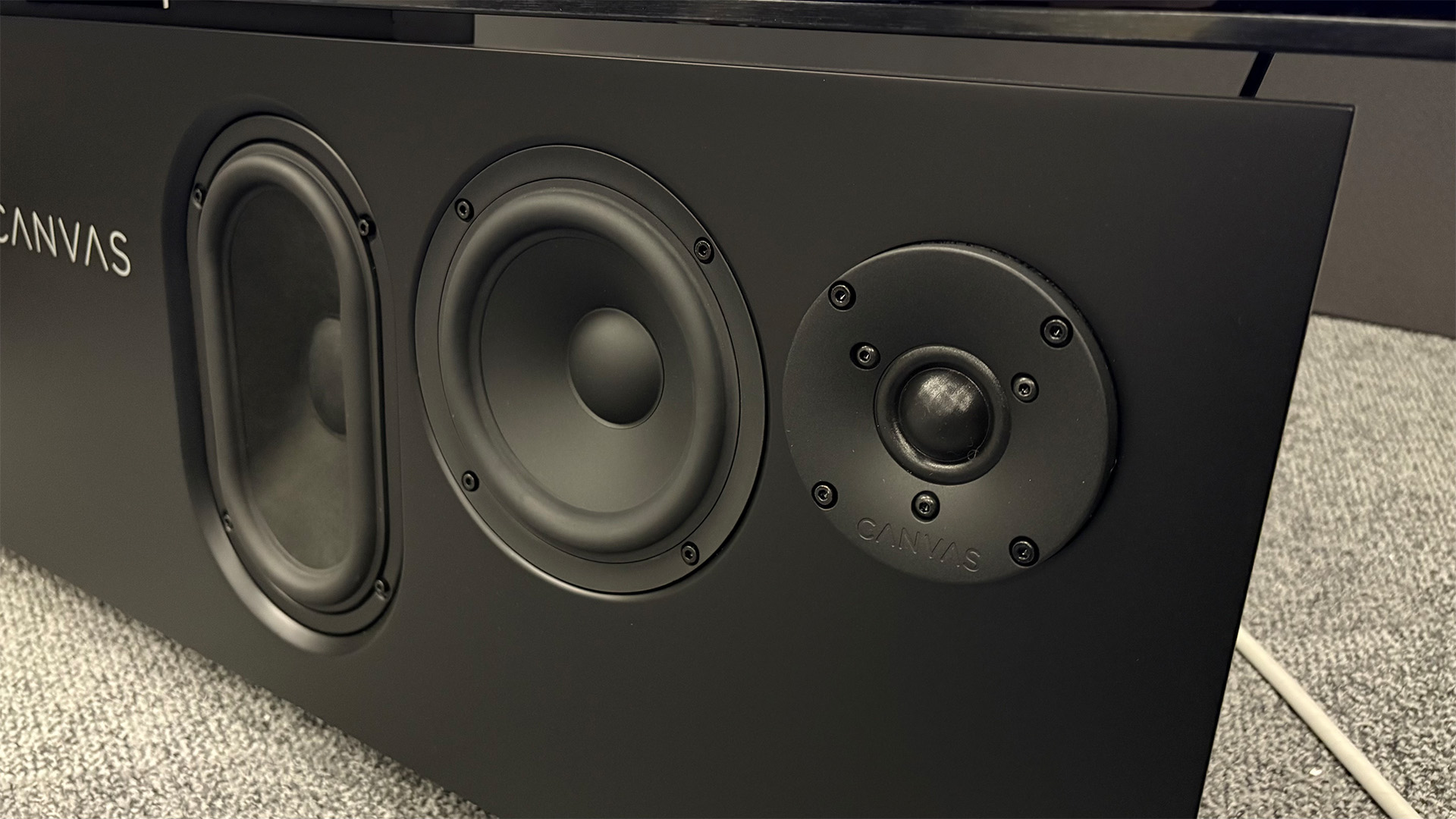
The Canvas’ proposition, if it wasn’t clear by now, is all about offering a hi-fi-level cinematic sound. So does it deliver on this promise? We certainly think so.
We’ve paired the Canvas HiFi with our Sony Bravia 8 reference TV, our Oppo UDP-203 4K Blu-ray player, as well as a range of reference discs including Dune: Part Two, Civil War and Blade Runner 2049.
Before we get stuck into sound performance, we should discuss our preferred settings, as although there aren’t many to choose from, we do make an immediate discovery.
To our ears, the Canvas sounds best with room correction and Bacch 3D processing switched off; this sort of makes sense when we remember that it's a stereo product.
One setting we do switch on, however, is the HDMI volume boost feature. Without it, the Canvas sounds quiet, and needs to be turned up to quite a high volume in order to reach its full potential.
When turned up too high, it can sound strained, so this feature helps to level things out by introducing a 10dB volume boost, allowing the Canvas to deliver punchy, cinematic audio without losing nuance or focus.
It’s designed to compensate for lower volume outputs from built-in streaming apps. However, we find it improves the experience across the board.
Leaving the Canvas HiFi in its natural state, we’re immediately floored by how crisp and natural it sounds. Detail levels are exceptional, with the clattering of helicopter blades in Civil War sounding textured and precise.
Voices are another highlight, as the conversation between Officer K and Joi in the bleak sci-fi apartment in Blade Runner 2049 sounds wonderfully authentic and emotive, and they’re underpinned with a richness that makes them sound genuinely lifelike.
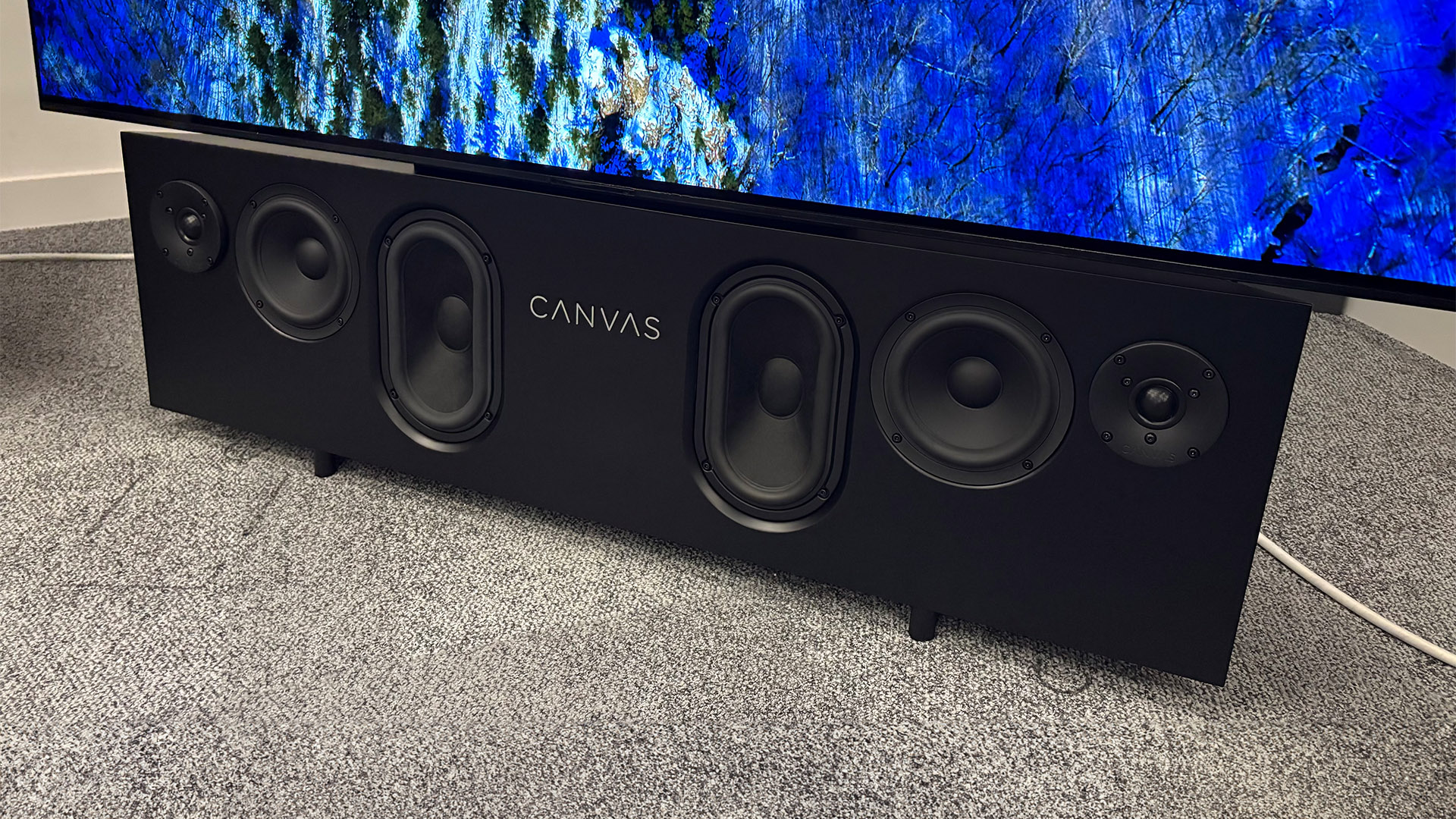
Where the Canvas HiFi truly excels, however, is with low-end punch.
Bass is presented with a level of weight that you could liken to an external subwoofer; it’s deep, rich and nicely controlled. This is evidenced in the bass-heavy Harkonnen arena fight in Dune: Part Two, which is presented with plenty of low-frequency heft, meaning the scene is conveyed with ample drama.
We appreciate how direct and clear the Canvas sounds, as it doesn’t try to add anything with processing. Dolby Atmos is great when implemented correctly, but the simplicity and focus on pure audio quality are where the Canvas shines.
It’s also skilled with music, as evidenced with a handful of tracks that we play through the Canvas, including Churchyard by Aurora and Bloom, Baby Bloom by Wolf Alice. Timing is handled very well, and the naturalness of voices and instruments does an excellent job of replicating the music with texture and detail.
There is, however, one sticking point that just holds the Canvas HiFi back from true greatness. Its handling of dynamics is, unfortunately, not quite good enough. Scenes and tracks with big moments of impact or dynamic shifts lack the crescendos that we look for in products such as this.
The Canvas has no trouble building up a moment of suspense or a verse that is about to enter a bombastic chorus, but it never quite hits the peak, resulting in a slightly weak pay-off.
It’s a shame, as the clarity, detail levels and the sheer weight of the sound make for an otherwise thoroughly engaging sound.
We also find that the included black fabric grille can rattle in scenes with heavy bass. This might be due to the lightweight acoustic cloth used in conjunction with the lightweight design and magnetic connection. It introduces what sounds like distortion, but removing the standard grille negates this issue.
Trying the heavier wooden fascia fixes this issue, though spending £1299 to fix an issue isn’t exactly an ideal scenario.
Verdict
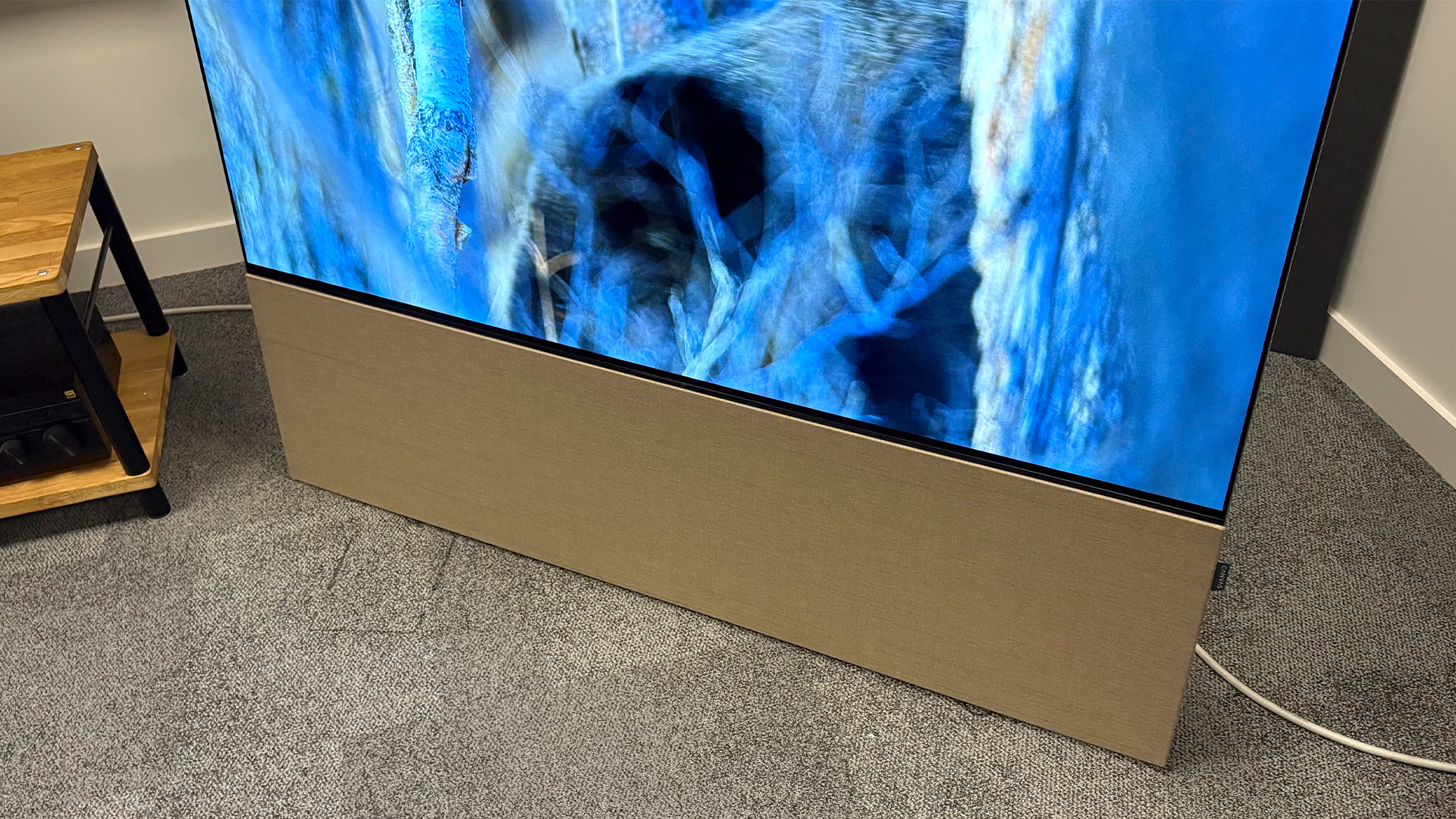
The Canvas is a prime example of niche, audiophile gear straying away from the exclusive world of hi-fi and into the realm of home cinema.
We’ll admit, we had some prejudices when we found that this pricey sound system didn’t support some of the most commonplace cinematic audio features, but those notions were quickly dispelled.
Its clear, detailed and weighty sound is supremely cinematic, and even though it doesn’t quite deliver the goods where dynamics are concerned, we find that there’s lots to like here.
Sometimes, simplicity is a pro in itself, so if you want a straightforward and effective stereo upgrade for your TV, all in a stylish package, then this quirky speaker system is certainly worth a look.
SCORES
- Sound 4
- Build 4
- Features 3
MORE:
Read our review of the Sennheiser Ambeo Max
Also consider the Sonos Arc Ultra
Read our Sony Theatre Bar 9 review
Best soundbars: options for every need, recommended by our experts
Lewis Empson is a Senior Staff Writer on What Hi-Fi?. He was previously Gaming and Digital editor for Cardiff University's 'Quench Magazine', Lewis graduated in 2021 and has since worked on a selection of lifestyle magazines and regional newspapers. Outside of work, he enjoys gaming, gigs and regular cinema trips.
You must confirm your public display name before commenting
Please logout and then login again, you will then be prompted to enter your display name.
